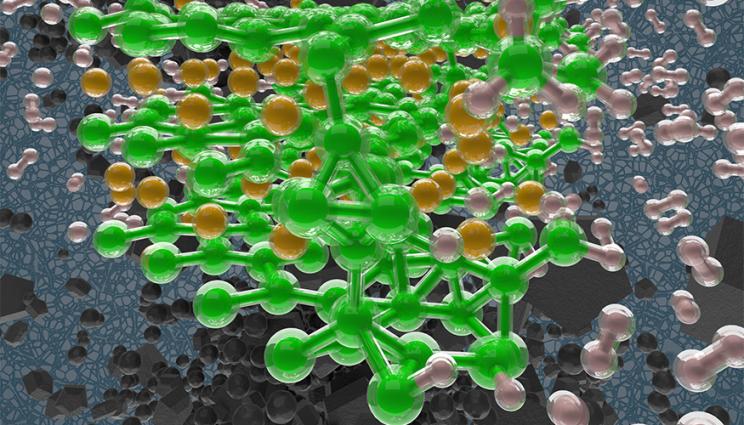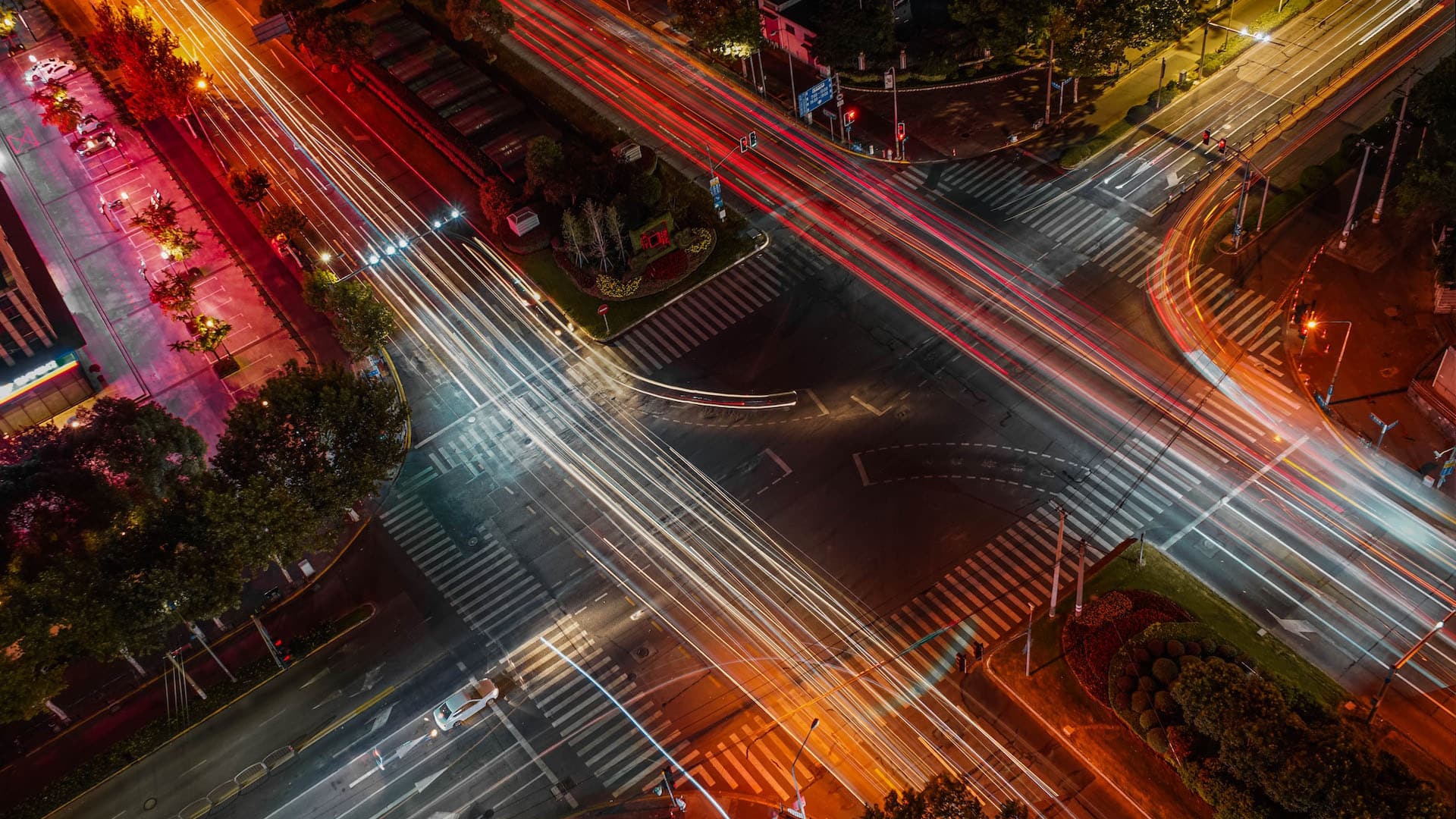2023-02-07 ローレンスリバモア国立研究所(LLNL)

Hydrogen absorption at the surface of magnesium diboride (MgB2) studied with first principles simulations. The background depicts MgB2 crystallites. Image by Liam Krauss/LLNL.
◆水素貯蔵材料のひとつである錯体金属水素化物は、高い絶対貯蔵容量をもつ一方で、その容量を達成するためには極端な圧力と温度を必要とすることがある。研究チームは、水素と反応する表面積を増やし、必要な水素化の深さを減少させるナノサイズ化によって、この課題に取り組んだ。LLNLを含む以前の研究では、二ホウ化マグネシウム(MgB2)をナノスケールで分析したが、その材料はそれほど薄くなく、互いにクラスター化することがあった。
◆今回の共同研究では、ジルコニアの無溶媒機械的剥離により、厚さわずか11~12原子層の材料を作製し、バルク材料の約50倍の水素化容量を実現した。この50倍の水素化能力は、表面積/体積比が50倍になったことにきちんと対応しており、バルク材料もナノシート材料も、およそ最初の2層で水素化するという、粒子サイズに依存しない普遍的な挙動を示すことが示唆された。11-12層のナノ材料の両側の2層では、これはMgB2の最大水素容量の3分の1に相当する。
◆MgB2はマグネシウム層とホウ素層が交互に重なっており、マグネシウム層からホウ素層への電荷移動によってホウ素層が安定化する。LLNLの計算では、材料表面の不完全なMg被覆が、マグネシウムを完全に被覆する島と、安定性の低い表面ホウ素層の乱れた領域を持つ表面構造にエネルギー的に有利であることが明らかになった。表面ホウ素層の乱れに関するこれまでの研究から、計算によって、MgB2上のマグネシウム被覆が水素化によってどのように変化するかが明らかにされた。
<関連情報>
- https://www.llnl.gov/news/going-small-thin-better-hydrogen-storage
- https://onlinelibrary.wiley.com/doi/10.1002/smll.202205487
部分剥離型二ホウ化マグネシウム多層膜の水素吸蔵特性 Hydrogen Storage in Partially Exfoliated Magnesium Diboride Multilayers
Harini Gunda, Keith G. Ray, Leonard E. Klebanoff, Chaochao Dun, Maxwell A. T. Marple, Sichi Li, Peter Sharma, Raymond W. Friddle, Joshua D. Sugar, Jonathan L. Snider, Robert D. Horton, Brendan C. Davis, Jeffery M. Chames, Yi-Sheng Liu, Jinghua Guo, Harris E. Mason, Jeffrey J. Urban, Brandon C. Wood, Mark D. Allendorf, Kabeer Jasuja, Vitalie Stavila
Small Published: 05 December 2022
DOI:https://doi.org/10.1002/smll.202205487
Abstract
Metal boride nanostructures have shown significant promise for hydrogen storage applications. However, the synthesis of nanoscale metal boride particles is challenging because of their high surface energy, strong inter- and intraplanar bonding, and difficult-to-control surface termination. Here, it is demonstrated that mechanochemical exfoliation of magnesium diboride in zirconia produces 3–4 nm ultrathin MgB2 nanosheets (multilayers) in high yield. High-pressure hydrogenation of these multilayers at 70 MPa and 330 °C followed by dehydrogenation at 390 °C reveals a hydrogen capacity of 5.1 wt%, which is ≈50 times larger than the capacity of bulk MgB2 under the same conditions. This enhancement is attributed to the creation of defective sites by ball-milling and incomplete Mg surface coverage in MgB2 multilayers, which disrupts the stable boron–boron ring structure. The density functional theory calculations indicate that the balance of Mg on the MgB2 nanosheet surface changes as the material hydrogenates, as it is energetically favorable to trade a small number of Mg vacancies in Mg(BH4)2 for greater Mg coverage on the MgB2 surface. The exfoliation and creation of ultrathin layers is a promising new direction for 2D metal boride/borohydride research with the potential to achieve high-capacity reversible hydrogen storage at more moderate pressures and temperatures.



